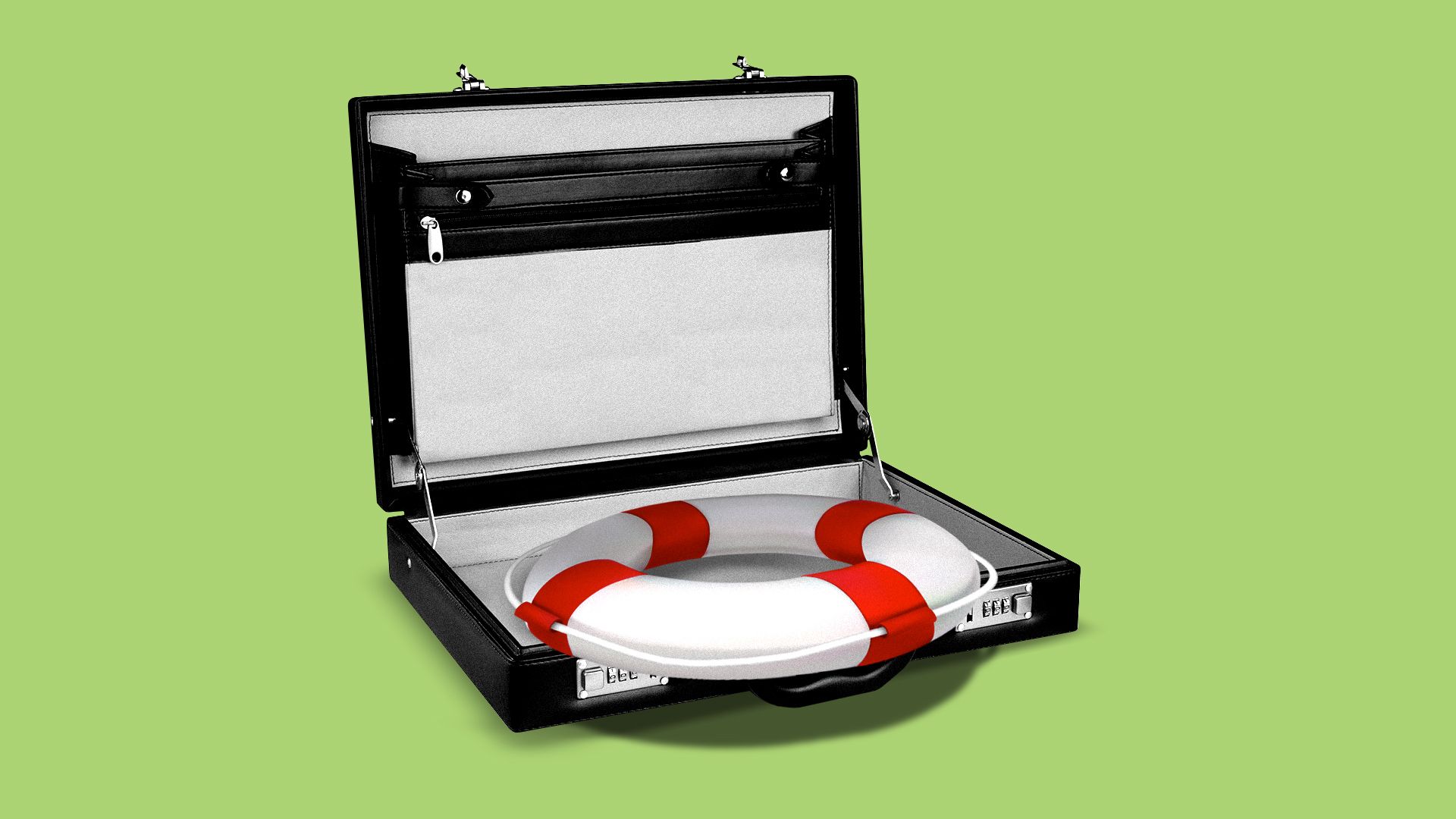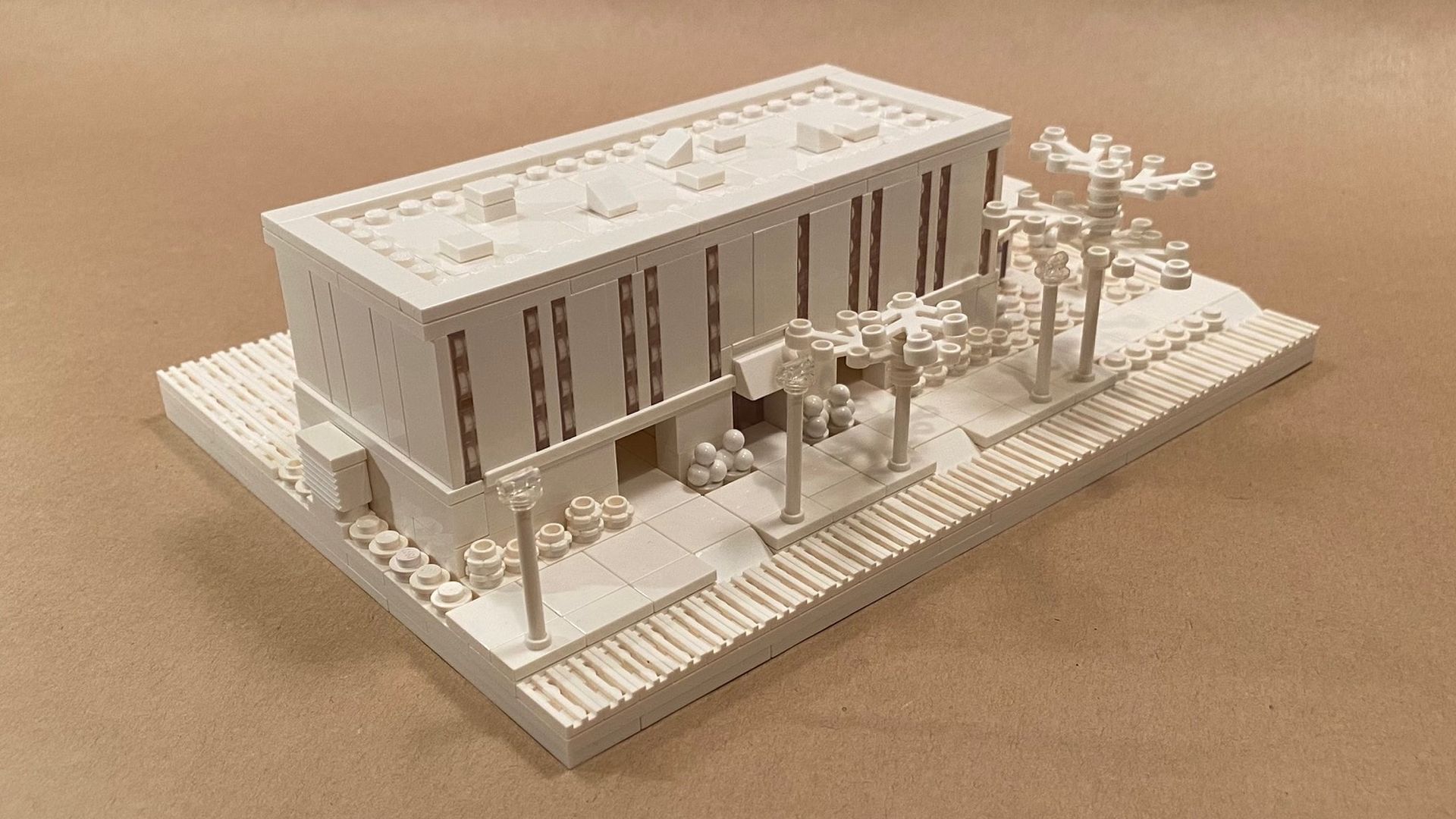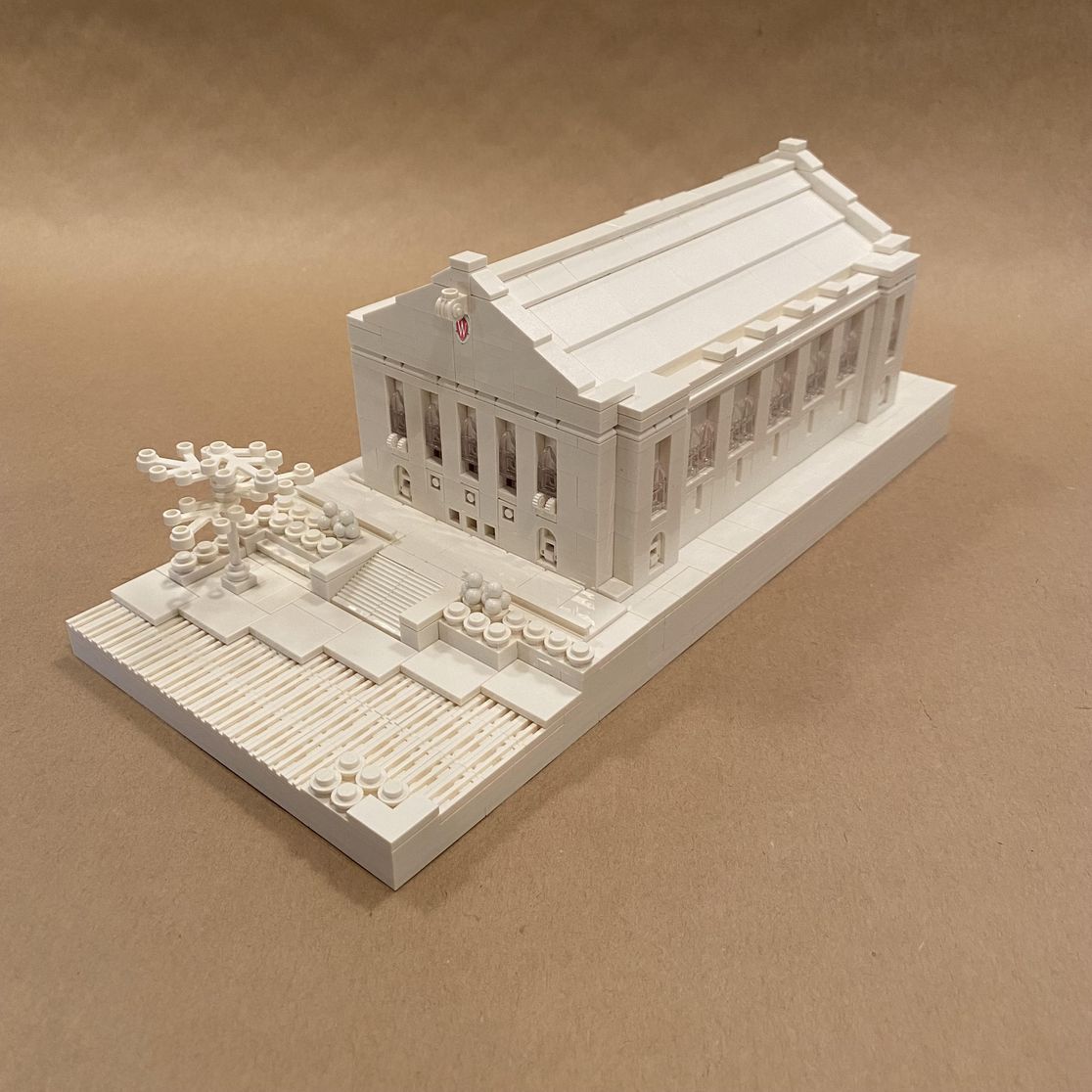| | | | | | | | | | | Axios What's Next | | By Jennifer A. Kingson and Joann Muller · Apr 25, 2022 | | There's no end in sight to the pickleball craze! Our story Friday about a pickleball entertainment complex in Charlotte, North Carolina, prompted reader Ross Harness to point out a growing food-and-play chain called Chicken N Pickle. - Today, we highlight Lego creations from reader Aaron Williams.
- Want to show us something cool or interesting? Send a picture for our reader photo slot to whatsnext@axios.com.
Today's Smart Brevity count: 1,181 words ... 4.5 minutes. | | | | | | 1 big thing: How the pandemic is changing home design |  | | | The "Barnaby" concept home for post-pandemic living. Image courtesy of Garman Homes and Dahlin Group. | | | | The pandemic has changed what Americans want from their homes, and builders say they expect those changes to last, Jennifer A. Kingson writes. The big picture: A ton of pandemic-era adaptations are becoming common fixtures in new homes. The model homes that builders are showing off today are meant for working, living and learning, not just coming home and crashing at the end of the day. Details: Big pre-pandemic trends — open plans with big kitchen islands — aren't going anywhere. "My verdict is that people really like open floor plans, and they're here to stay," says Nancy K. Keenan, president of Dahlin Group Architecture and Planning, who helped conduct the America at Home Study of pandemic-era consumer tastes in home design. - But overall footprints are getting bigger as builders add on more smaller rooms, which may need to function as offices, play rooms, home gyms or dens, depending on the family.
- Bathrooms are getting bigger, in part because we use them more often when we're home all day. And every room of the house is more wired — builders are adding power outlets and USB ports to accommodate the devices essential to working or attending school from home.
- Some homes also feature separate entrances for guests, with easy access to a powder room for hand-washing.
Flashback: The "powder room" was originally born from the flu pandemic of 1918, as were tiled bathrooms, as people replaced draperies and carpets that harbored germs. Between the lines: "Homes are becoming more like office space," says Amit Haller, CEO and co-founder of the homebuilding company Veev. "There is the grand opening area with a very large countertop island that allows people to eat together." - From there, residents can carry their laptops to private rooms as needed.
- "The bedroom is going to be literally like your conference room and your private space," Haller says.
Yes, but: Bigger houses are more expensive, and high interest rates will only make a mortgage even harder to afford. Read the full story. |     | | | | | | 2. Emerging work perk: "menstrual leave" |  | | | Illustration: Shoshana Gordon/Axios | | | | Digital distribution platform GOG, headquartered in Poland, is now providing its employees with menstrual leave, a policy unheard of in many places, Megan Farokhmanesh writes in Axios Gaming. Why it matters: It's considered a controversial policy, one that some say respects the physical toll of menstruation but risks making employees who take advantage of the time off seem less capable. How it works: GOG estimates an additional day off per quarter, but allows employees to take time as needed "whenever period pains occur," culture and communication manager Gabriela Siemienkowicz told Axios. - Employees can also choose to take paid time off by hours, instead of an entire day.
- Siemienkowicz called the policy "experimental in a sense that we plan to evaluate in what way those additional days off impact the well-being of our menstruating employees at the end of 2022, and consider expanding the policy in the upcoming year."
The idea was inspired by Siemienkowicz's own experience when she was having an especially painful period. - "It fosters inclusiveness by accepting that there are biological differences in the workplace," she said, adding that it helps break down taboos around periods. "By giving such additional days off, we acknowledge these symptoms are real."
Read the full story. |     | | | | | | 3. How e-commerce enables inflation |  | | | Illustration: Aïda Amer/Axios | | | | Blame the rise of e-commerce for (at least some of) the inflation we're seeing, Felix Salmon writes in Axios Capital. - We no longer live in a "Price is Right" world where any given item has a knowable true price that is broadly unchanged from day to day or from store to store. Instead, prices are constantly fluctuating and unpredictable — which makes them much easier to raise.
Why it matters: Prices, like phone numbers, are things we don't need to remember — we can look them up on the internet if we need to know them. As we pay less attention, however, we become less price-sensitive, giving companies more scope to raise prices. How it works: Historically, it has been difficult for merchants to change prices. Economists talk of "menu costs" — if a restaurant wants to raise its prices, it needs to reprint all of its menus, often at significant expense. - If the restaurant menu is a QR code, on the other hand, raising prices is just a matter of changing numbers on a single web page. That's why e-commerce outlets generally change their prices much more frequently than physical stores do.
- Physical stores are now following suit: E-ink displays at supermarkets can change as frequently as a price on Amazon, while a single item from a single restaurant can have a whole range of different prices depending on where and how it was ordered.
Where it stands: It's becoming increasingly hard to know what anything is supposed to cost. Prices sometimes seem as though they're the product of a random number generator: Here a loaf of bread is $29, there the five-volume Jasper Johns catalogue raisonné is $199. If you paid face value for your concert ticket, you're in the minority. |     | | | | | | A message from Axios | | Accelerate your decision-making | | |  | | | | Axios Pro delivers deeper reporting analysis on your industry, in the most concise format possible. Who it's for: If you're an investor, consultant, executive or other critical decision-maker, Axios Pro is for you. Use code PRO200 at checkout to get $200 off your subscription. | | | | | | 4. CEOs seen as outpacing policy leaders on climate action |  | | | Illustration: Aïda Amer/Axios | | | | Policymakers are starting to lag behind the private sector when it comes to the urgency of reducing emissions, according to Mark Carney, United Nations special envoy for climate action and finance. Why it matters: Private sector financing is crucial to helping countries slash emissions at the pace required to meet the temperature targets set out in the Paris Agreement, Andrew Freedman writes in Axios Generate. - But there is a risk that companies and financial institutions could get too far ahead of governmental policymakers, who need to set the rules of the road for establishing and enforcing emissions targets and timetables.
Driving the news: Carney, who leads the Glasgow Financial Alliance for Net Zero (GFANZ), told Axios that the network representing more than $130 trillion in assets has been focused on turning commitments into action since its commitments were unveiled at COP 26 in November. Yes, but: Climate activists met the GFANZ initiative with skepticism, wary of greenwashing, and that concern hasn't gone away. - Activist groups sent GFANZ a letter Thursday calling on its members to stop financing fossil fuel projects. Separately, they published a new report that tallies ongoing investments.
- "I understand the criticism, the criticism that no one's been moving fast enough," Carney told Axios.
- "Governments haven't been moving fast enough. In fact, I would argue that governments are now lagging the corporate sector, and certainly lagging the NGO and activist sector, in truly taking the problem as seriously as it needs to."
Share this story. |     | | | | | | 5. Reader photos of the day — Lego neighborhood |  | | | A Lego rendering of the UW-Madison Center for Tobacco Research, at 1930 Monroe Street, in Madison, Wis. Photo courtesy of AWLA (Aaron Williams Landscape Architecture) | | | | What's Next: Engaging the local community through art. Aaron Williams writes: "This is what is next in Madison, Wisconsin … hyper-local re-creation of the buildings in my neighborhood. Galvanizing the neighborhood around the businesses that contribute so much to our quality of life and sense of place here in the 608." Between the lines: During the pandemic, Williams made a hobby of creating Lego models of buildings in his neighborhood, including many that housed businesses struggling due to COVID-19. - He made more than 60 of them, was written up in the local news, and displayed some at the Madison Museum of Contemporary Art.
A Lego version of the UW-Madison Field House. Photo courtesy of AWLA (Aaron Williams Landscape Architecture) A Lego version of the Lauer Realty + Triangulador Mural building in Madison, Wis. Photo courtesy of AWLA (Aaron Williams Landscape Architecture. |     | | | | | | A message from Axios | | Accelerate your decision-making | | |  | | | | Axios Pro delivers deeper reporting analysis on your industry, in the most concise format possible. Who it's for: If you're an investor, consultant, executive or other critical decision-maker, Axios Pro is for you. Use code PRO200 at checkout to get $200 off your subscription. | | | | Was this email forwarded to you? Get your daily dose of What's Next magic by signing up for our free newsletter here. |  | It's called Smart Brevity®. Over 200 orgs use it — in a tool called Axios HQ — to drive productivity with clearer workplace communications. | | | | | | Axios thanks our partners for supporting our newsletters. If you're interested in advertising, learn more here.
Sponsorship has no influence on editorial content. Axios, 3100 Clarendon Blvd, Suite 1300, Arlington VA 22201 | | | You received this email because you signed up for newsletters from Axios.
Change your preferences or unsubscribe here. | | | Was this email forwarded to you?
Sign up now to get Axios in your inbox. | | | | Follow Axios on social media:    | | | | | |












No comments:
Post a Comment